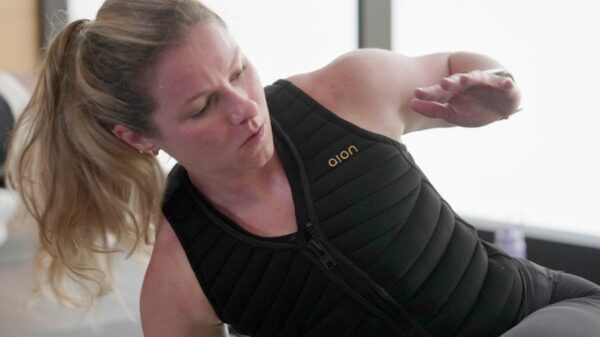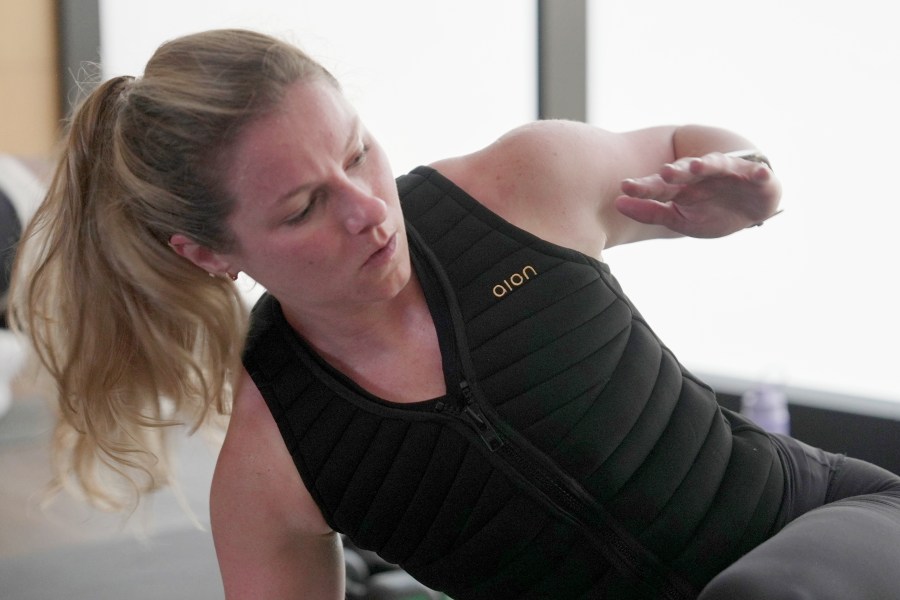Increasingly popular in fitness classes across various locations, weighted vests are being embraced by exercisers looking to enhance their workouts. In a program developed by Jessie Syfko, senior vice president for Life Time gyms, participants wear these vests to add resistance, which enhances the challenge of their routines. “People start to realize how good it feels to work just a little bit harder and a little bit smarter,” Syfko stated, highlighting the appeal of this fitness tool.
Weighted vests, designed to provide additional resistance through removable weights, are now a common sight in gyms and jogging tracks. They have garnered attention on social media, with influencers promoting their potential benefits for improving bone health, enhancing athletic performance, and accelerating weight loss. Despite the buzz, experts caution that substantial research on their long-term benefits is limited, prompting some individuals—particularly seniors and pregnant women—to approach their use with care.
Understanding the Benefits of Weighted Vests
The concept behind weighted vests is straightforward: adding weight increases resistance during everyday activities, which can potentially boost fitness outcomes such as weight loss and muscle growth. While these benefits may seem plausible, experts note that users should not expect immediate transformations.
Certified strength coach Jeff Monaco from the University of Texas at Austin suggests that while calorie burn may not significantly increase, the resistance from the vests can enhance sports performance over time. “There are a lot of studies looking at (the weighted vest) from a speed perspective in different athletics, like soccer, with changing direction, agility and speed,” Monaco explained. Aiming to maximize these benefits typically involves adding about 10% of one’s body weight to the vest. For instance, someone weighing 150 pounds would add approximately 15 pounds.
However, research beyond the athletic context presents a mixed picture. A study from Wake Forest University School of Medicine in North Carolina found that adults aged between 60 and 85 who wore weighted vests during their most active times experienced similar weight loss and bone density retention as those who did not use them. This indicates that while weighted vests may have some advantages, their effects can vary widely across different demographics.
Safety Considerations for Using Weighted Vests
Experts emphasize the importance of using weighted vests safely. It is generally recommended to start with a vest that adds between 5% and 10% of an individual’s body weight. Overloading the vest can lead to undue stress on joints, back, and hips, which in turn may adversely affect posture and form, potentially resulting in injuries such as stress fractures.
Certain populations should consult healthcare professionals before incorporating weighted vests into their routines. Dr. Elizabeth Gardner, a team physician for athletes at Yale University, advises that individuals with heart or respiratory conditions, as well as those managing back or neck injuries, should seek medical advice. “You’ll have to use the muscles in your abdomen to use a weighted vest effectively,” Gardner noted, acknowledging that this may pose additional challenges for those already dealing with back pain.
To ensure proper usage, Monaco encourages individuals to seek guidance from experienced trainers. “It’s always helpful to get guidance from someone who has experience with them, just to make sure that your movements are good, your form is good, that you have enough muscular upper body strength and endurance to support that during your movements,” he said.
When used correctly, weighted vests can be a beneficial addition to a fitness regimen. As fitness enthusiasts continue to explore various training methods, these vests offer a unique way to enhance workouts, provided that safety considerations are taken into account.






























































